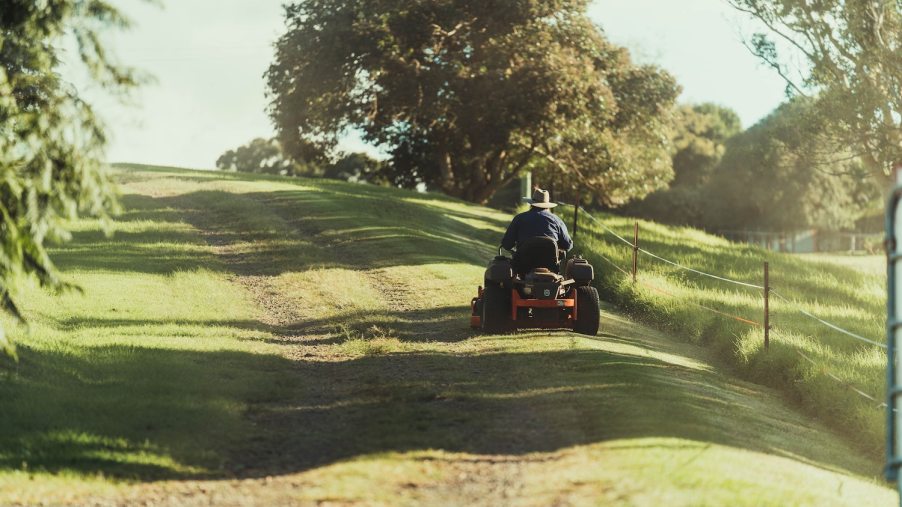
Your mower blades are the “business” end of your lawnmower: keeping them sharp is one of the most crucial lawn mower maintenance tasks you can complete. To be blunt, dull blades damage your lawn and can even wear your lawnmower prematurely. So here’s how to sharpen your lawnmower blades.
Is it worth sharpening the mower blade?
It is critical to the health of your lawn–and the safe operation of your lawnmower–that you keep your blades sharp. A dull lawnmower blade does not slice grass stalks, it tears them. This tearing results in a jagged grass stalk that exposes the plant to disease.
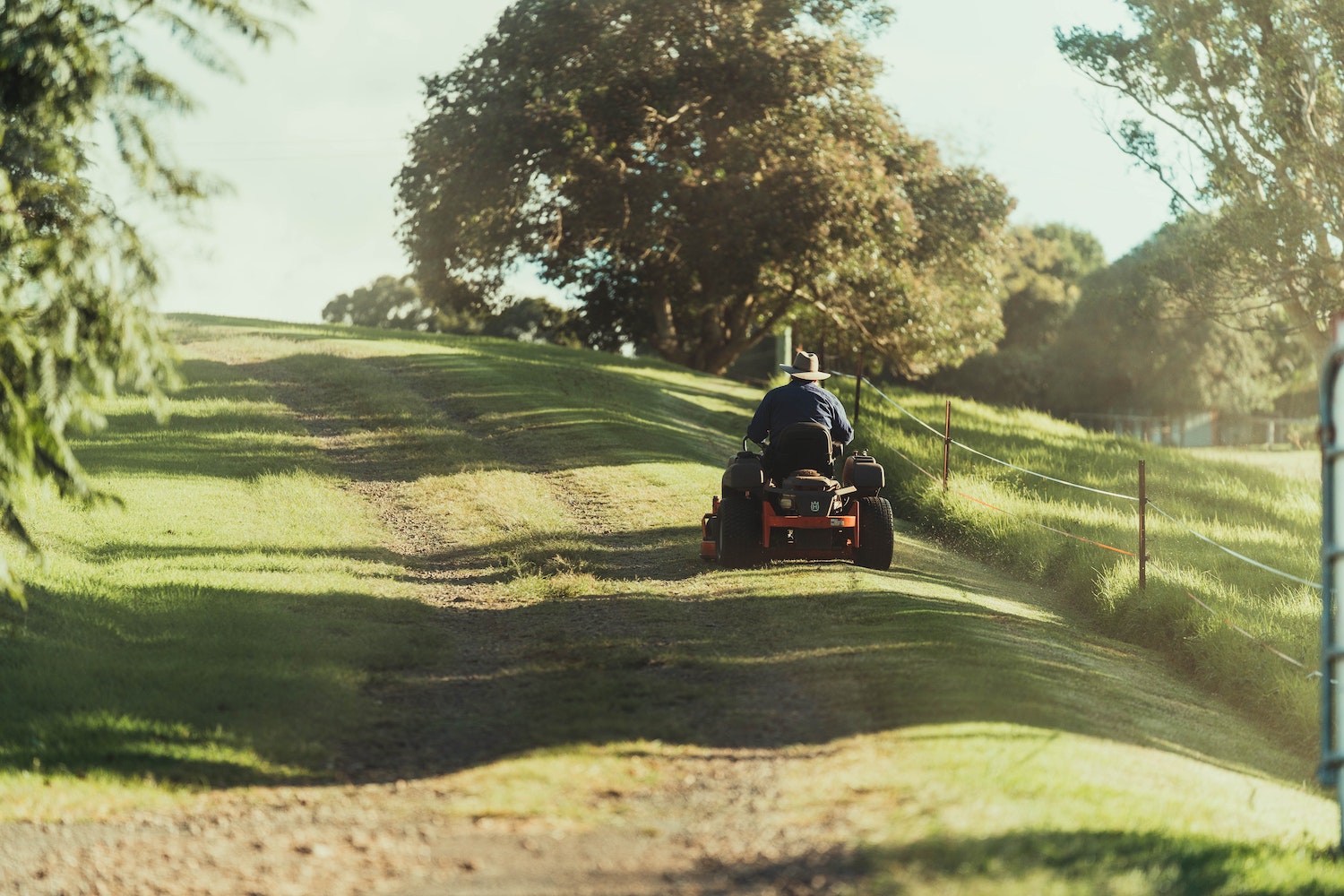
A torn grass stalk often turns yellow; a lawn of torn grass can have an ugly, yellowish hue. This lawn is also susceptible to plant diseases.
A dull mower blade can be dangerous: nicks and chips in a mower blade’s surface can leave one side lighter than the other. This blade imbalance can eventually damage spinning components. And finally, a dull blade makes your lawnmower work harder–and wear out sooner.
Can I sharpen my own lawn mower blade?
Many homeowners and landscapers sharpen their own lawnmower blades, and you can too. The most time-consuming part of the task can be removing the blades from your mower, and the most dangerous aspect can be using a blade sharpener or other cutting tool to remove metal from the edge of your blades until they’re sharp.
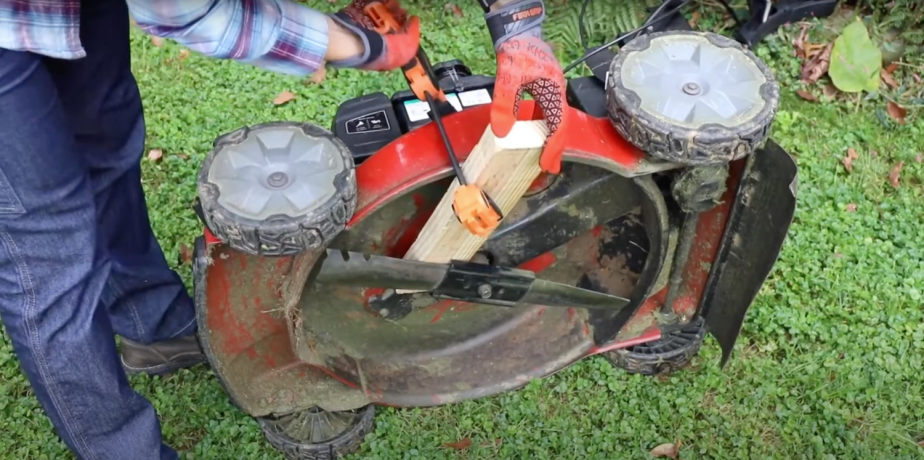
I actually enjoy sharpening my mower blades. But I find the most mundane part of the process to be removing the blades from the mower. If you have a push mower, you will want to drain its gas, turn it on its side, secure the blade from spinning, and use a socket and ratchet to remove the nut holding your mower blade in place.
If you have a riding mower, you will need to jack it up to access the bottom of your mower deck and remove your blades. The Home Depot recommends you fix your blade in place by wedging a 2”x4” between your blade and deck, then clamping the board to the deck.
I have seen some mower mechanics slip a length of wide-diameter pipe over the end of the mower blade, then hold the pipe in place with one hand while using the other hand to spin the ratchet loosening the nut holding the blade in one place. But I feel that clamping each blade in place is safer mower maintenance for an amateur like me.
Finally, you may need some penetrating oil and even a breaker bar to remove your blades if they have been rusted in place for a while.
What is the easiest way to sharpen lawn mower blades?
Any job is easier with the right tools. A lawnmower blade sharpener is a round tool you spin with a power drill. It is angled, so you get a perfect blade edge every time.
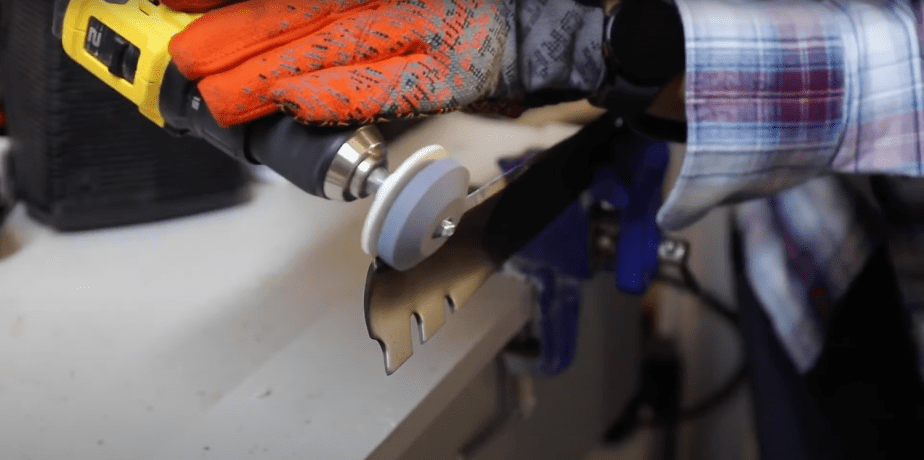
After you have removed your mower blade, clamp it to a table or workbench. No matter what tool you use to sharpen your blades, you’ll want to protect yourself from metal shavings with gloves and safety glasses.
The Home Depot says that you then use a hand file or a blade sharpener stone and power drill to remove metal from the edge of your blade until it is sharp again.
How sharp should a lawnmower blade be?
Be sure to continue sharpening the edge of your blade past any nicks or chips in the blade’s edge. Continue sharpening until the blade’s cutting edge is not only sharp, but it’s a straight line.
The Home Depot specifies that a blade as sharp as a butter knife is sharp enough to slice your grass. But not every homeowner agrees.
Alan Hayne runs The Lawncare Nut Youtube Channel. He uses a mower blade sharpening procedure several of my friends and neighbors swear by: Hayne uses a mechanic’s angle grinder to sharpen his mower blades and always grinds them down until they are “razor-sharp.” His motto is that sharper is always better.
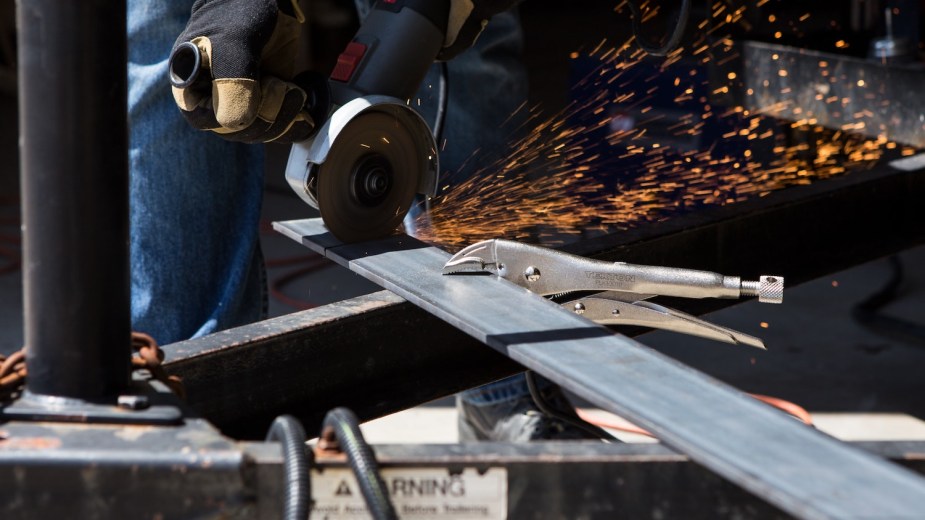
So who is right? Is there such a thing as too sharp?
Firstly, the sharper you get your mower blade, the more metal you must grind off of it. The more metal you remove from your mower blade with each sharpening, the sooner you must replace it.
Secondly, you stand a chance of injuring yourself while trying to reinstall a “razor-sharp” mower blade. A butter-knife-sharp blade is much safer to handle.
What is more, the edge of a razor-thin blade is not as strong as the thicker edge of a duller blade. If that razor-thin blade strikes a rock, it is more likely to bend or chip.
Finally, if a blade can slice your grass without tearing the stems, it is a sharp enough tool for the task at hand.
Do you need to balance your mower blades?

You must make sure the weight of your blade is balanced before reinstalling it on your mower. An unbalanced blade will cause an annoying vibration as it spins and can damage the rotating components of your lawnmower.
Many lawn mower blade sharpeners come with a balance-measuring tool. This tool is simply a cone that holds the blade aloft like a see-saw. Alternatively, you can use a nail driven into the wall of your shop or even a screwdriver held in your hand. Simply insert the nail or screwdriver through the hole at the center of the blade, then let go of the blade and see if its two ends balance each other.
If one side of your blade is heavier, you must remove more metal from that side until the blade is balanced. Home Depot suggests removing more metal by further sharpening the blade. But some mechanics prefer grinding metal off the “back” or non-cutting edge of the blade to preserve the cutting edge as long as possible.
Want to see how to sharpen a lawnmower blade for yourself? Check the video below:



